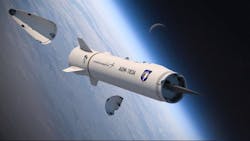Pentagon eyes new missile-defense sensor and seeker technologies to defeat ICBMs and hypersonic munitions
WASHINGTON – The Pentagon is fast-tracking a Next-Generation Interceptor (NGI) to deploy missile-defense technology to track and destroy new enemy threats like high-speed, precision-guided intercontinental ballistic missiles (ICBMs) and hypersonic weapons traveling through space. Kris Osborn of The National Interest reports. Continue reading original article
The Military & Aerospace Electronics take:
21 July 2021 -- Mobile ICBM launchers, nuclear weapons traveling at hypersonic speeds, multiple precision-guided re-entry vehicles, and multiple missiles attack at once, each with several separating warheads all are serious threats the Missile Defense Agency (MDA) and industry are working to counter with a new missile-defense weapon by the end of the decade.
Intended to introduce paradigm-changing technologies, the emerging NGI is being engineered to destroy several ICBMs at one time while distinguishing actual ICBMs from debris, decoys, or enemy countermeasures. This requires a new measure of seeker discernment able to discriminate actual threats from decoys or track multiple threats at once.
The initial thinking was that the new NGI will emerge by the end of the decade, and it now appears the MDA is working with a Raytheon-Northrop Grumman NGI team to move that up to as early as 2028. Northrop Grumman and Raytheon Missiles & Defense are to provide the interceptor booster, kill vehicle, ground systems, fire control, and engagement coordination for the country’s Ground Midcourse Defense (GMD) system.
Related: Electro-optical sensors key to missile defense
John Keller, chief editor
Military & Aerospace Electronics
